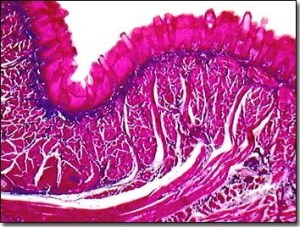In this article, we re-examine a study by scientists from the University of California, Berkeley that had identified critical biochemical pathways linked to the aging of human muscle. By manipulating these pathways, the researchers were able to turn back the clock on old human muscle, restoring its ability to repair itself!
The study shows that the ability of old human muscle to be maintained and repaired by muscle stem cells can be restored to youthful vigor given the right mix of biochemical signals. Professor Irina Conboy, a faculty member in the graduate bioengineering program that is run jointly by UC Berkeley and UC San Francisco, is the head of the research team that conducted the study.
Previous research that Conboy had done in animals, revealed that the ability of adult stem cells to repair and replace damaged tissue is governed by the molecular signals they get from surrounding muscle tissue, and that those signals change with age in ways that preclude productive tissue repair. Those studies also demonstrated that the regenerative function in old stem cells can be revived given the appropriate biochemical signals!
What was not clear until this study was whether similar rules applied for humans. Unlike humans, laboratory animals are bred to have identical genes and are raised in similar environments. Moreover, the typical human lifespan lasts seven to eight decades, while lab mice are reaching the end of their lives by age 2.
Working in collaboration with Dr. Michael Kjaer and his research group at the Institute of Sports Medicine and Centre of Healthy Aging at the University of Copenhagen in Denmark, the UC Berkeley researchers compared samples of muscle tissue from nearly 30 healthy men who participated in an exercise physiology study. The young subjects ranged from age 21 to 24 and averaged 22.6 years of age, while the old study participants averaged 71.3 years, with a span of 68 to 74 years of age.
The researchers discovered that in the legs that remained immobile, mature stem cells used for repairing muscle tissue and restoration were present in quantities of roughly half as much in older muscle tissue as they were in the youthful samples. The variance was even more wide spread when the exercise period was factored in. The youthful tissue had approximately four times the amount of redevelopment cells that would vigorously mend damaged tissue when evaluated against the aged muscle tissue that contained vigorous stem cell activity.
The researchers further examined the response of the human muscle to biochemical signals. They learned from previous studies that adult muscle stem cells have a receptor called Notch, which triggers growth when activated. Those stem cells also have a receptor for the protein TGF-beta that, when excessively activated, sets off a chain reaction that ultimately inhibits a cell’s ability to divide. The researchers said that aging in mice is associated in part with the progressive decline of Notch and increased levels of TGF-beta, ultimately blocking the stem cells’ capacity to effectively rebuild the body.
This study revealed that the same pathways are at play in human muscle, but also showed for the first time that mitogen-activated protein (MAP) kinase was an important positive regulator of Notch activity essential for human muscle repair, and that it was rendered inactive in old tissue.
MAP kinase [or MAPK] is commonly known to biologists in the developmental field due to it being an essential enzyme where organ growth is concerned in various species, some as atypical as nematodes, fruit flies and rodents. For aged muscle in humans, MAPK quantities are reduced so the Notch connection corridor remains un-stimulated and the stem cells don’t carry out the muscle restoration work as preprogrammed.
Conboy says: “Thanks to these discoveries, we now know that the MAPK pathway plays a key role in regulation and aging of human tissue regeneration. In practical terms, we know that to enhance regeneration of old human muscle and restore tissue health, we can either target the MAPK or the Notch pathways”
Read more about the Berkely study and the reverse aging of human muscle tissue.
Maria Konovalenko
SCIENCE FOR LIFE EXTENSION FOUNDATION
http:/mariakonovalenko.wordpress.com/
maria.konovalenko@gmail.com



Pingback: Rajeunir les tissus musculaires humains – c’est possible ! | - Immortalité, Nanotechnologies, Cryogénie, éthique et visions du futur
Tacky practical question: how far away is this kind of thing from reaching patients?
Tackier sub question: When will we be able to do this for human skin?
This study revealed the key pathways that govern the regeneration in muscles. Now when the targets are known the next step would be to identify the therapies. So, another round of research. And then when the therapies are found they have to be translated into clinic, which means several stages of safety checks and trials.
It is hard for me to give an accurate time estimate, but my wild guess is 3 years. Mabe more, if there are no changes in the existing FDA approval system.
Only three years? That seems pretty quick but I’ll take it!
Pingback: Calgary wedding photographer
Great write-up Maria.
Pingback: Futureseek Daily Link Review; 31 July 2013 | Futureseek Link Digest
Hi there, its pleasant paragraph regarding media print, we all be familiar with media is a impressive source of
information.